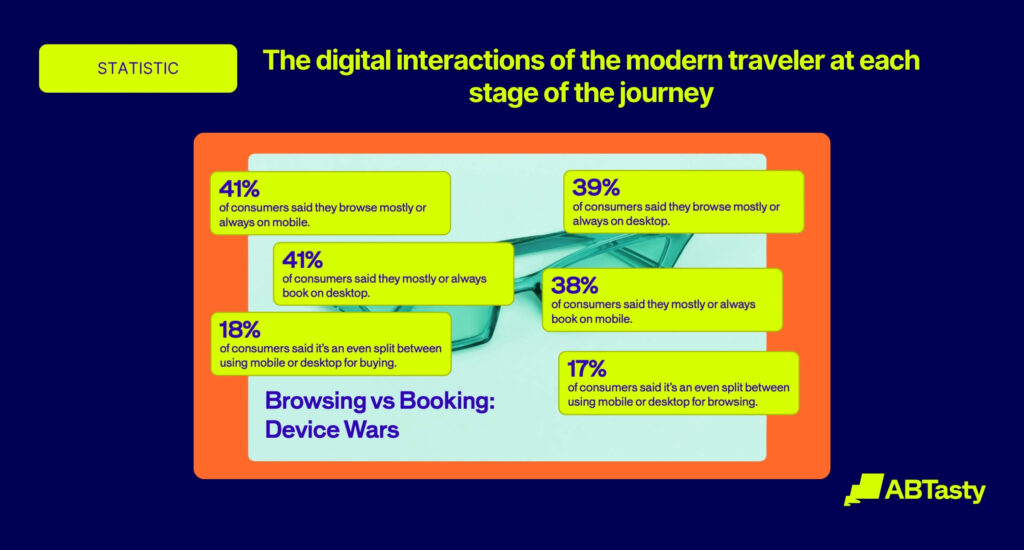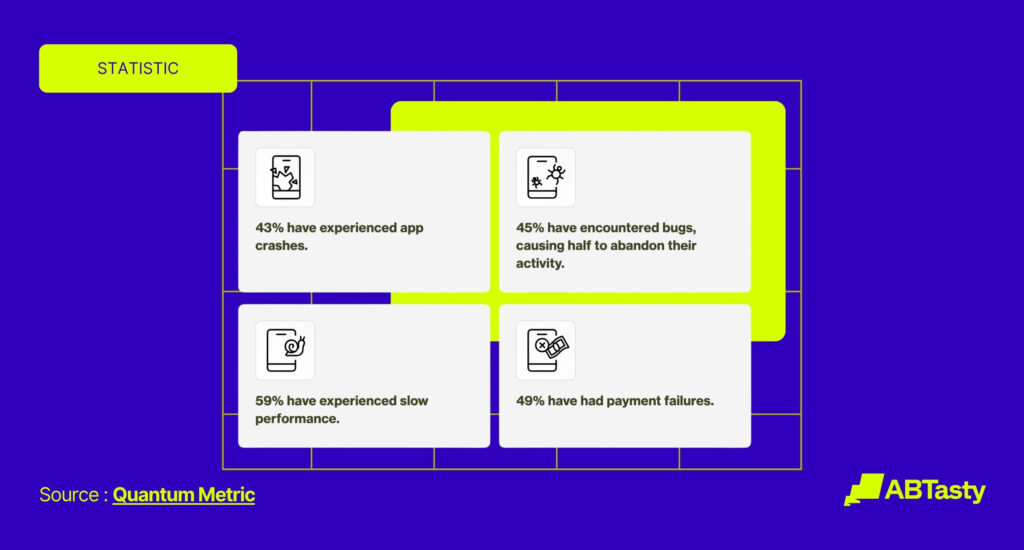We’ve all been there. Sprawled on the couch, phone in hand, dreaming up the perfect getaway. You scroll through stunning destinations, compare flight times, and find a hotel that looks just right. It’s exciting. It’s inspiring. And then… you put your phone down, deciding you’ll book it later on your laptop.
Sound familiar? It’s a story playing out millions of times a day.
This jump from mobile browsing to desktop booking is more than just a common habit; it’s a multi-billion dollar friction point for the travel industry. Your customers are dreaming on the go, but they’re hesitating to commit. The good news? This isn’t a dead end. It’s an opportunity. It’s a chance to turn that hesitation into confidence and those browsers into bookers, right where they are.
Let’s dive into what’s holding mobile travel back and how your team can start building a better, more trusted experience. Because good things happen to those who change.
Discover our Travel Essentials Kit to unpack 10 game-changing strategies that turn your digital experience into the smoothest journey from search to check-in.
The mobile paradox in travel
The numbers tell a fascinating story. Mobile devices are the undisputed engine of discovery in the travel sector, driving the lion’s share of online traffic. According to industry analysis from Zoftify, mobile is responsible for approximately 60% of all visits to travel websites. Yet, research from TravelPerk shows that despite accounting for the majority of browsing sessions, mobile devices represent a much smaller fraction of actual sales, with an estimated 60% of all bookings still coming from desktops.
That’s a huge gap between interest and action. While users love the convenience of browsing on their phones, there’s a clear disconnect when it comes time to pull out a credit card. This isn’t just a missed opportunity; it’s a signal that the mobile experience isn’t meeting the moment. Customers are ready to be inspired on mobile, but they aren’t yet convinced it’s the best place to make a high-stakes purchase. The challenge for your team is to bridge that gap.

Trust and performance: barriers to mobile conversion
So, what’s causing this hesitation? It boils down to two critical factors: performance and trust. When you’re asking a user to spend hundreds or even thousands of dollars, their confidence in your platform has to be absolute.
The data reveals where those cracks appear. According to research from Quantum Metric, it’s no wonder consumers have trust issues: 59% have experienced slow performance, 49% have had payment failures, and 43% have dealt with app crashes. On top of that, 45% have encountered bugs, causing half of them to abandon what they were doing. Each hiccup erodes trust. It plants a seed of doubt that asks, “If the site can’t even load properly, can I trust it with my booking?” This feeling is backed by the numbers; data reported by Navan indicates that only 25% of consumers feel fully confident completing a travel booking on their mobile device. That’s the core of the challenge. It’s not about a lack of desire, it’s about a lack of confidence.

UX moves that boost confidence and usability
Building confidence doesn’t require a complete overhaul. It starts with smart, user-centric design choices that make the experience feel seamless and secure. Every smooth interaction is a small deposit in the user’s trust bank.
Here’s where your team can start making an immediate impact:
- Respect the thumb-zone: We navigate our phones with our thumbs. Placing key calls-to-action (CTAs) and navigation elements at the bottom of the screen makes them easy to reach and reduces physical effort. It’s a small change that makes your app feel instantly more intuitive.
- Simplify every form: No one enjoys typing on a small screen. Keep your forms lean by removing non-essential fields. Enable guest checkout to remove registration barriers, use progress indicators on multi-step forms, and provide inline validation so users can fix errors in real-time.
- Keep essentials above the fold: When a user lands on a mobile page, the most critical information and the primary CTA should be immediately visible without scrolling. This orients them instantly and shows them exactly what to do next.
Experimentation ideas specific to travel mobile
Understanding best practices is one thing. Knowing what works for your audience is where the real progress happens. This is where you move from fixing problems to finding your unique better. It’s time to embrace a mindset of “trial and better.”
Here are a few bold ideas to get your team started:
Test your navigation
Is a traditional hamburger menu really the best fit, or would a bottom navigation bar increase engagement with key sections? Run an A/B test to see which style helps your users find what they need faster.
Dial up the trust signals
Experiment with the placement and design of security badges and payment logos (Visa, PayPal, etc.) in your checkout flow. Does adding a “Secure Checkout” lock icon next to the “Book Now” button increase conversions? Let the data decide.
Optimize for perceived performance.
A content-heavy page doesn’t have to be a slow page. Experiment with technical solutions like progressive image loading for your visuals. This method loads a placeholder image first that sharpens as it fully loads, delivering content to the user more quickly. This improves actual load performance and keeps users engaged from the moment they land.
Run micro-experiments on upsells
The mobile booking flow is a delicate dance. A poorly timed upsell for baggage or a seat upgrade can feel disruptive. Test different triggers for these offers. Do they perform better when presented right after flight selection, or on the final confirmation page?
Bridging browsing to booking, from insight to action
The gap between mobile traffic and mobile conversion isn’t an unsolvable problem. It’s a series of smaller challenges waiting for creative solutions. By using benchmark data, you can identify your users’ biggest pain points and prioritize where to focus your efforts first.
Building a culture of iterative testing is the key. Small wins add up, creating a powerful momentum that continuously improves the user experience. As you monitor shifts in your mobile conversion rates and order values, you’re not just watching metrics. You’re seeing the direct result of your team’s courage to try, learn, and find what’s better.






